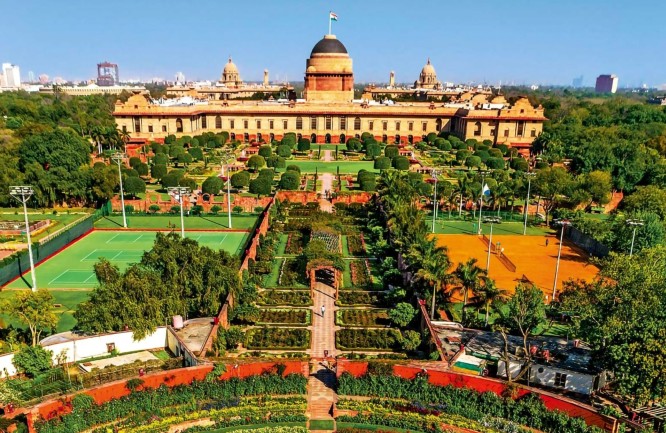The Mughal Garden, located within the grounds of the Rashtrapati Bhavan in New Delhi, is one of the most popular tourist attractions in the city. The garden, known for its beautiful flowers and lush green plants, has now been renamed Amrit Udyan and is set to open its doors to the public from January 31. The President’s secretariat has announced the opening date, ticket prices, and other details for visitors who want to explore the garden’s beauty.
The Mughal Garden, now known as Amrit Udyan, is a spectacular sight to behold. The garden is spread over 12 acres and features a variety of flowers and plants that are carefully tended to by skilled gardeners. The garden is divided into different sections, each showcasing a different type of plant or flower. The main attraction of the garden is the Mughal-style water channels that run through the garden and are surrounded by colourful flowers and plants. Visitors can also see the famous ‘Bonsai Garden‘ which is a small replica of the Mughal Garden.
The Amrit Udyan is also known for its medicinal plants and herbs. The garden has a vast collection of medicinal plants, which are used for the treatment of various diseases. Visitors can learn about the medicinal properties of the plants and how they are used in traditional Ayurvedic medicine.
The President’s secretariat has also announced some new rules and guidelines for visitors. Visitors are not allowed to carry any kind of food or water inside the garden. Photography is allowed, but visitors are not allowed to use any kind of professional camera equipment or drones. Visitors are also requested to maintain silence and respect the garden’s natural beauty.
FAQs:
- What is the exit and entry gate for Amrit Udyan?
The entry and exit point for visiting Amrit Udyan, previously known as Mughal Garden, is through Gate No. 35. - Who built the Mughal garden?
It was constructed by Sir Edwin Lutyens in 1917, in the traditional Persian Charbagh style.



























